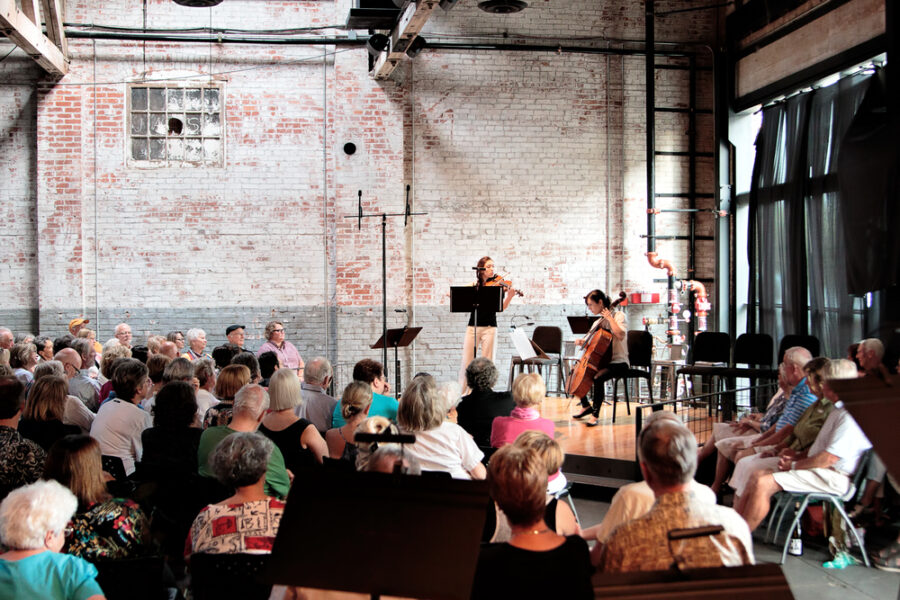By Vicki Hillhouse
NOTE: For details and tickets for this year’s festival, visit: https://www.wwcmf.org/
There’s a running joke with the Walla Walla Chamber Music Festival about its open public rehearsals: A violinist and cellist are sitting in a bar. One says to the other, “You were late.” The other responds, “You were early.”
The gag is that there’s no punchline. It’s a conversation you might actually hear during a rehearsal of the wildly talented musicians as it takes place in a tasting room, arboretum, library, retail boutique or, yes, a bar each June in the Walla Walla Valley.
Rehearsals and other free events — kid concerts, a performance at the VA, a pop-up gig — give spectators a glimpse at the music-making process. From there, the festival builds with a suite of ticketed performances that continue to explore the classics in nontraditional ways. An example: An exploration of classical music’s influence on heavy metal through the harpsichord cadenza from Bach’s “Brandenburg Concerto No. 5.”
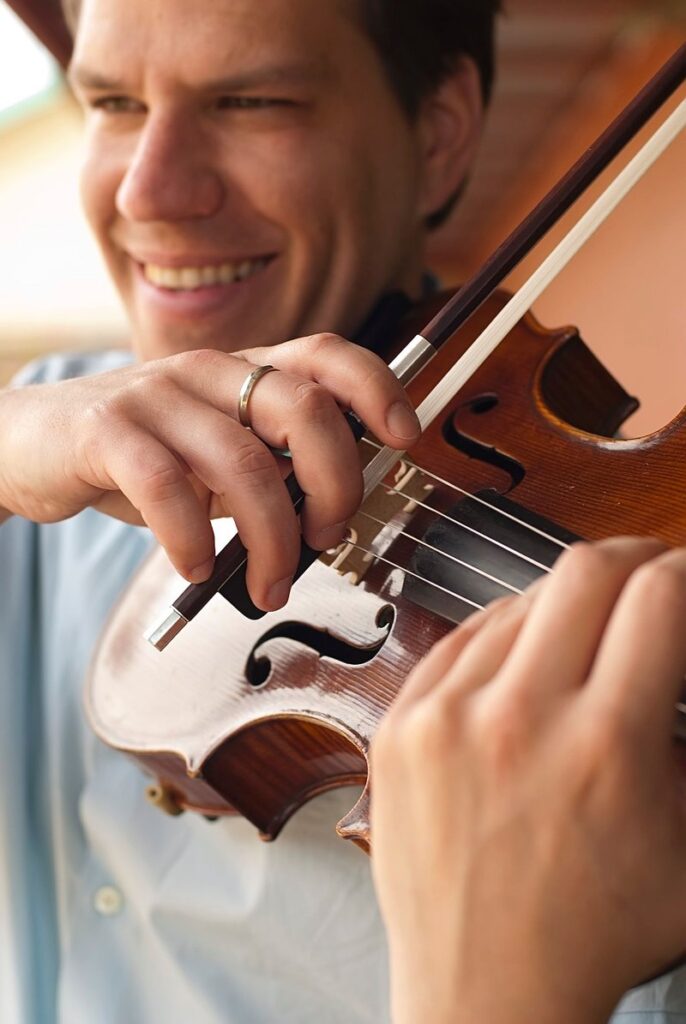
Behind it all is Timothy Christie, violinist, violist, founder and artistic director.
“We take our work and our art very seriously. But I don’t think we take ourselves too seriously, and I think the audience picks up on that. This is not powdered wigs and formal attire. You’ve never encountered a tuxedo at the Walla Walla Chamber Music Festival.”
He revealed that and much more in a recent Q-and-A session about the festival.
What is the Walla Walla Chamber Music Festival?
I guess it’s worth noting what chamber music is, and that is music in the tradition of Western classical music for a small number of players. Where symphonic music is a large performing force — 20 to 120 players on stage, sometimes with choirs and very much big and bold — the other end is chamber music meant for smaller stages and smaller venues with one player on a part.
The audience is close to the ensemble. It doesn’t come down to better or worse, good or bad, between the two. It’s just different. The Walla Walla Chamber Music Festival gives a really meaningful point of connection to the audience member — to be able to see that bead of sweat form on the brow as the music is becoming more intense. To see the nonverbal communication between the performers. To see how the music is coming together.
A large concert hall can be almost overwhelming in the number of people and the size of the force. This — on the other end of the spectrum — is almost more like a private concert.
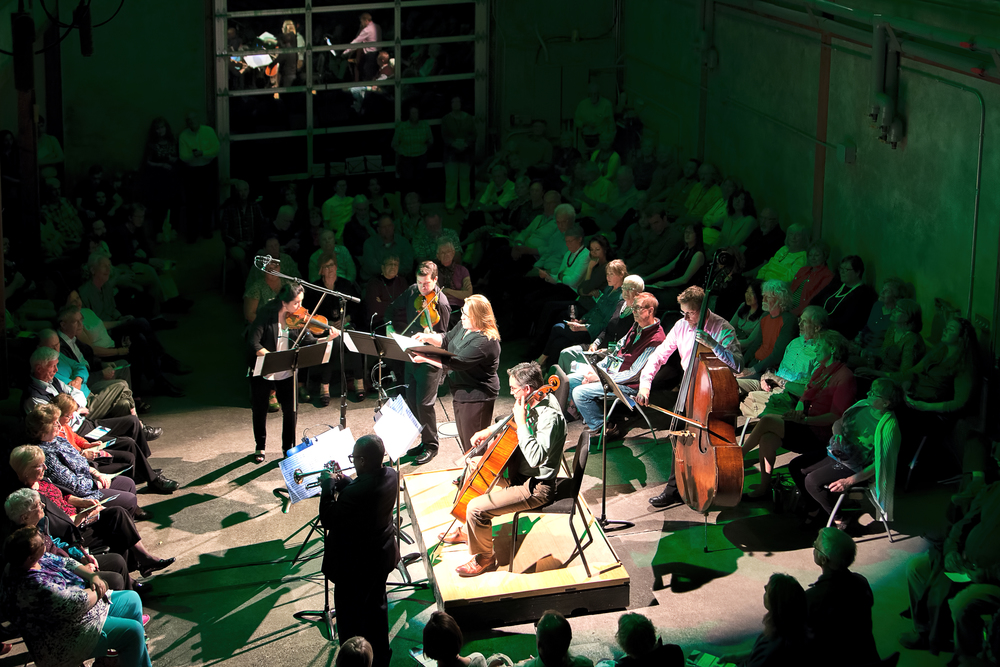
We have two main seasons: January is a four-day winter festival, and June runs the first Thursday through the last Saturday of the month.
A festival is about bringing in musicians from geographically diverse locations, including the host town, Walla Walla. Gathering one special place to make music of that moment — that’s really what makes a festival distinct from a concert series, and we tried to really bring that energy and excitement.
How did it start?
I was visiting Walla Walla in May 2007 with my family — my wife, Maria, who has played with the festival since the very beginning, and my daughter, who was 1 at the time. We had moved to the Pacific Northwest in 2002 for Maria’s position, teaching at University of Puget Sound in Tacoma. We realized we had never been to Eastern Washington, except when we moved here and passed through.
Maria had a concert at WSU, so we started exploring. We heard amazing things about Walla Walla — certainly the burgeoning wine industry played a role. We visited and stayed a couple of nights. It was just so verdant. It was a green time in Walla Walla. We would push a stroller down the sidewalks downtown, and people kept stopping and talking to us. That was just such a foreign experience. There’s a politeness without warmth on the west side. Someone will hold the door open for you, but not necessarily connect with warmth. We found that in Walla Walla — so much so that I looked around and wondered if there was a hidden camera, but there wasn’t.
My wife grew up in a town of similar size. I could see her just visibly relax here. This place is every bit as beautiful as all the places we’ve played summer musicals, from Aspen to Massachusetts. All these places have in common a scenic beauty. They’re places where people want to be. With the warmth we experienced in the community, a delicious dinner and a great experience, we said, “We’re going to find out who runs the summer festival and see if we can get involved.” With some research, we could see there wasn’t anything like that here.
We started cold calling places in Walla Walla. The idea kind of popped in my head, fully formed, about doing concerts in social settings, like wineries, having community events in town, free kids concerts and trying to find organizations in the community that were serving populations very unlikely to get exposure to something like live classical music.
I was told I needed a business plan, so I Googled how to make one. That was my education in nonprofit management. We gave a concert in September 2007. If you think about the visit that spawned that in May, that’s a short runway. We got our 501(c)(3) status as a nonprofit. The first full season was June 2008.
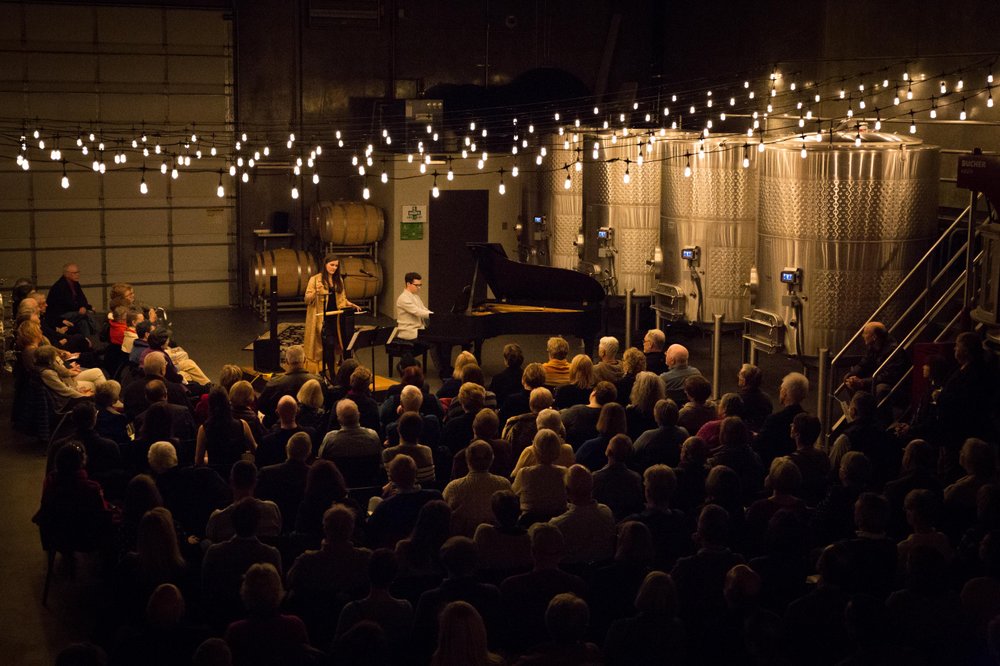
How has it changed over the years?
In the first season in June 2008, we had 26 public events in 12 days pulled off by nine musicians. Today, we do about 40 public events annually with a roster of about 35 musicians — sometimes more and sometimes a little less — between the two seasons.
How do you keep it fresh?
We try to be responsive. An example: One June season, we had a cellist in the roster of artists who it kind of leaked was playing a Stradivarius worth about $8.5 million. As people went from event to event, you could hear the conversations about it. “Is that the one? Is that the cello?” We sort of realized people were super interested in our instruments.
So, we decided to do an event and talk about the instruments themselves — deepen the experience.
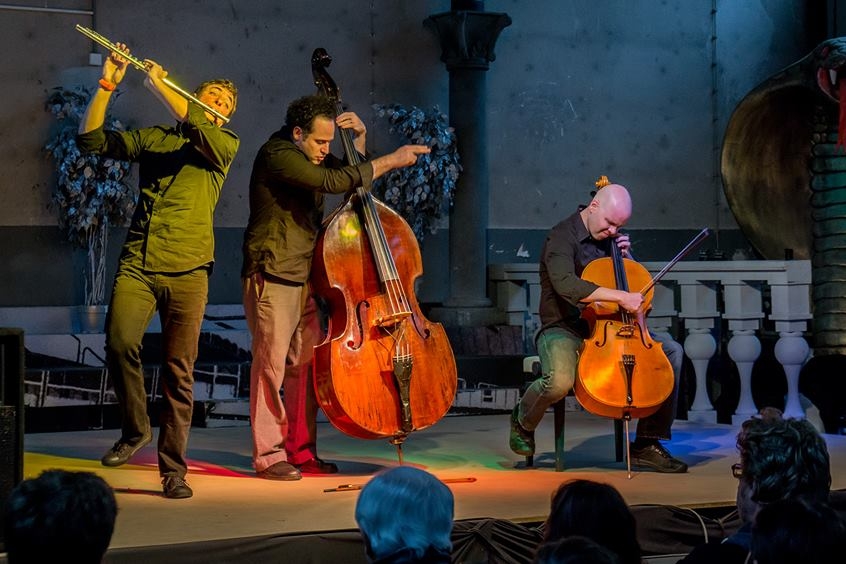
Musicians come and go during the festival. We had four incoming violinists and four outgoing, and the eight of us sort of volunteered up our instruments. The audience could hear what makes each one of them unique. We took this public curiosity and could talk about it with the audience. It doesn’t really matter if somebody tells you that’s an $8 million cello or a $2,000 cello. Would you know?
We could show there’s this crazy variation, despite all the similarities in our instruments. Within a millimeter or two, they were the same proportions. One was from 1720, and most were contemporary from the 1920s. Seven were made in Italy during that 200-year period. One was French. There are differences. The audience may not be able to put their finger on what it is, but it sounds different.
The instruments themselves have stories. My fiddle was around in France in the 1800s. Who was playing it, and where? Was it ever in any sort of difficult situations? Sometimes you know because they have a lineage.
What about Walla Walla makes this a unique experience for the musicians?
The people here feel like it’s their festival. All my musicians comment on how warm and special the Walla Walla audience is. The best part of that: As a visitor or first-time attendee, you instantly feel that you’re a part of that.

